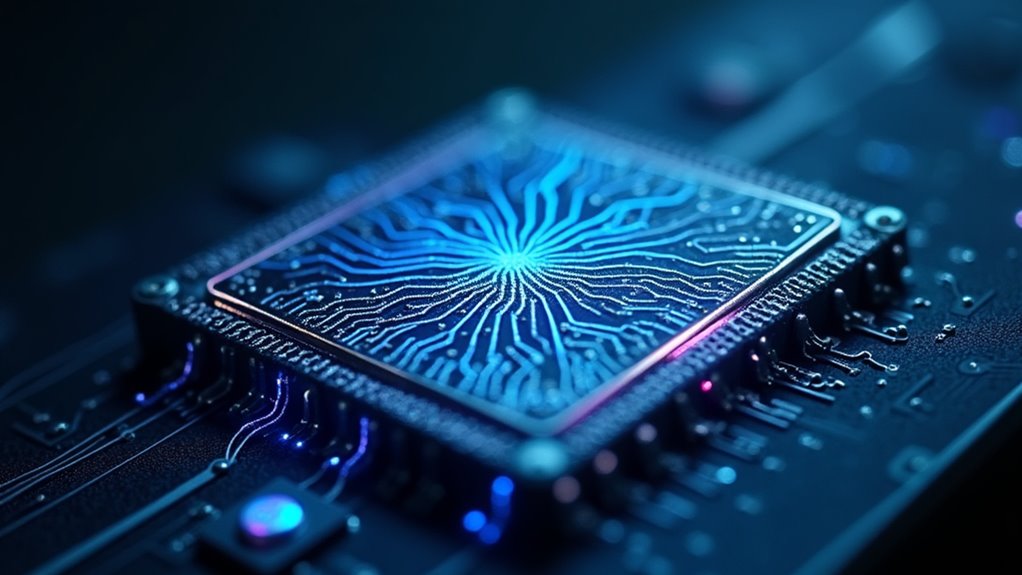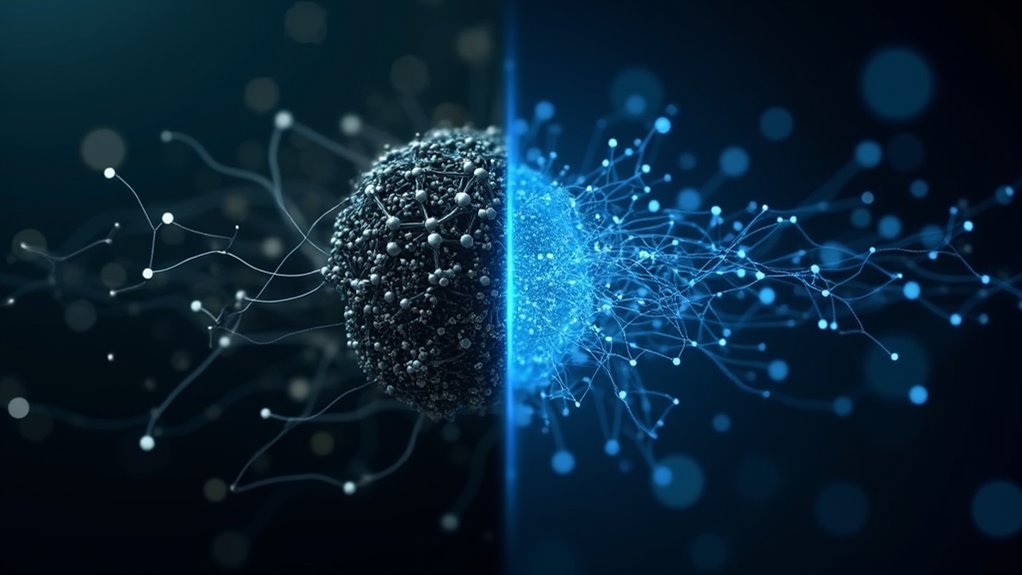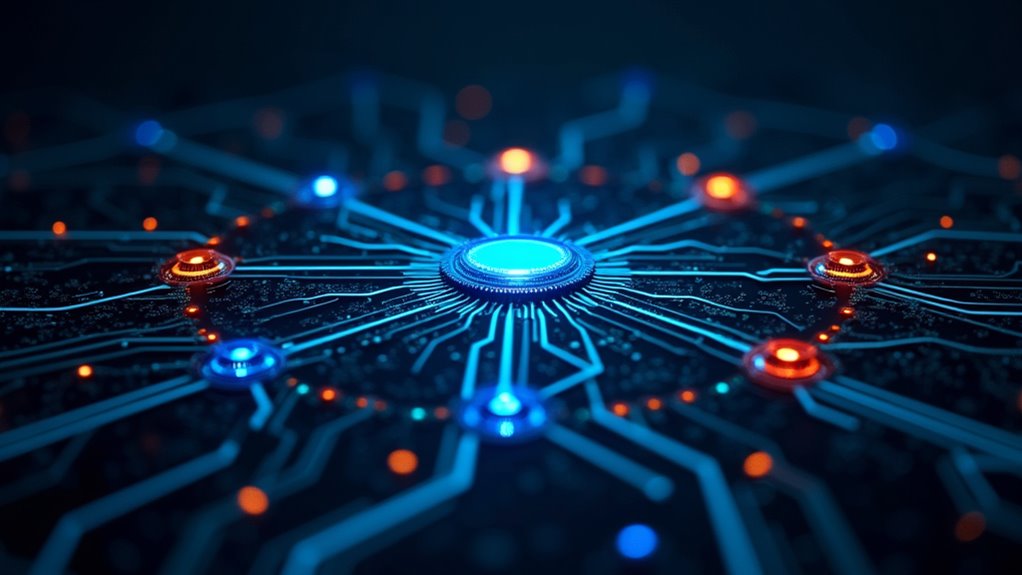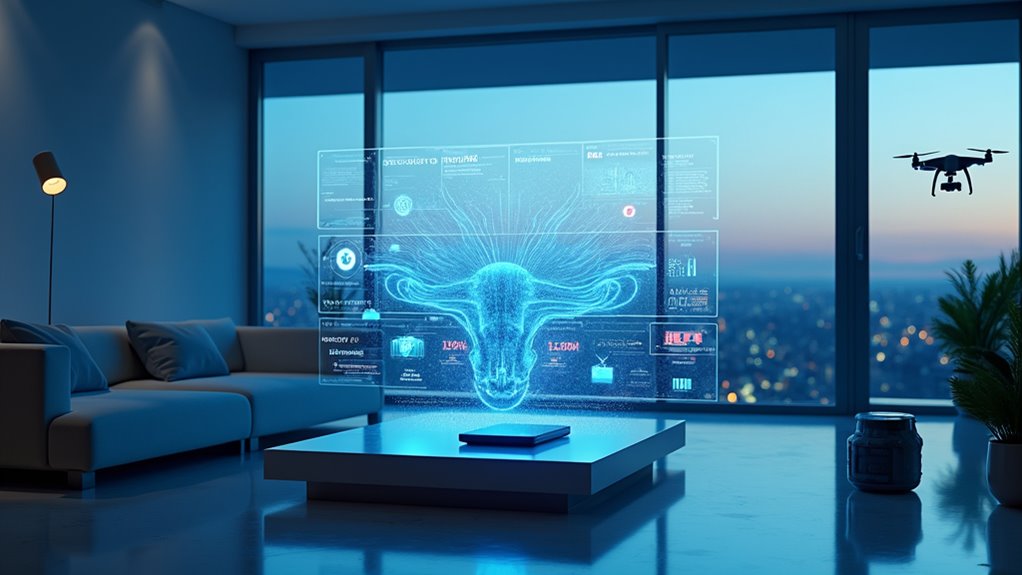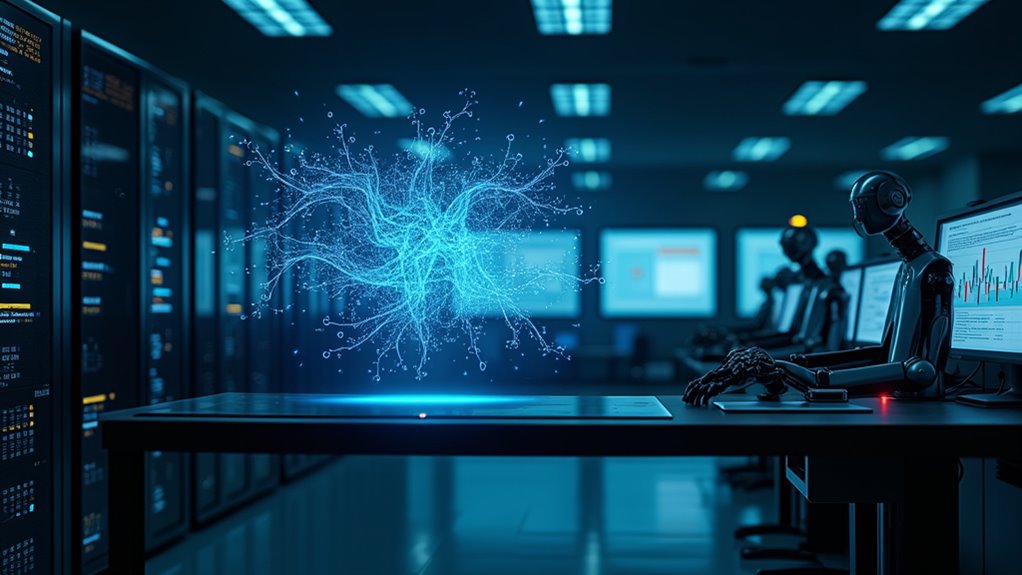Neuromorphic chips are the tech world’s ambitious attempt to recreate the human brain in silicon form. These specialized processors mimic biological neural networks, using electrical spikes to process information just like our neurons do. They’re incredibly energy-efficient and can handle multiple tasks simultaneously – way better than traditional chips. Companies like Intel and IBM are racing to perfect these brain-like processors, which could revolutionize AI computing. The future of computing might just be inside our heads.
While computer chips have traditionally followed rigid, predictable designs, neuromorphic chips are throwing that playbook right out the window. These revolutionary pieces of hardware take their cues from the most sophisticated computer ever created – the human brain. And boy, do they do things differently.
Scientists figured out something pretty obvious: the brain is incredibly efficient at processing information while using minimal power. So they decided to steal nature’s blueprint. The result? Chips that process information using discrete electrical spikes, just like our biological neural networks. It’s like watching evolution get fast-tracked in silicon. Modern designs like event-driven computation have made these chips even more energy efficient.
These aren’t your grandmother’s computer chips. They’re packed with parallel processing capabilities and can handle multiple tasks simultaneously – without breaking a sweat or draining your battery. Companies like Intel and IBM have jumped on the bandwagon, creating powerhouses like Loihi and TrueNorth. These chips aren’t just smart; they’re energy-efficient show-offs. The innovative NorthPole chip demonstrated remarkable performance, achieving inference speeds nearly 47 times faster than leading GPUs.
The applications are everywhere. Want a robot that can navigate like a pro? Neuromorphic chips have got it covered. Need AI at the edge of your network without killing your device’s battery? Done. They’re even helping process brain scans and recognize speech patterns. It’s like having a tiny brain in your device, minus the emotional baggage.
But here’s the kicker – copying the human brain isn’t exactly a walk in the park. Scientists are still scratching their heads over how to replicate some of its more complex functions.
And scaling these systems up? That’s another headache altogether. Some clever folks are experimenting with exotic materials like phase-change and ferroelectric compounds to push the boundaries further.
The future of computing is starting to look a lot more… biological. These chips are bringing us closer to machines that can learn and adapt on the fly, just like we do.
Well, maybe not exactly like we do – they won’t be posting on social media or binge-watching shows anytime soon. But for raw processing power with brain-like efficiency? They’re absolutely crushing it.
